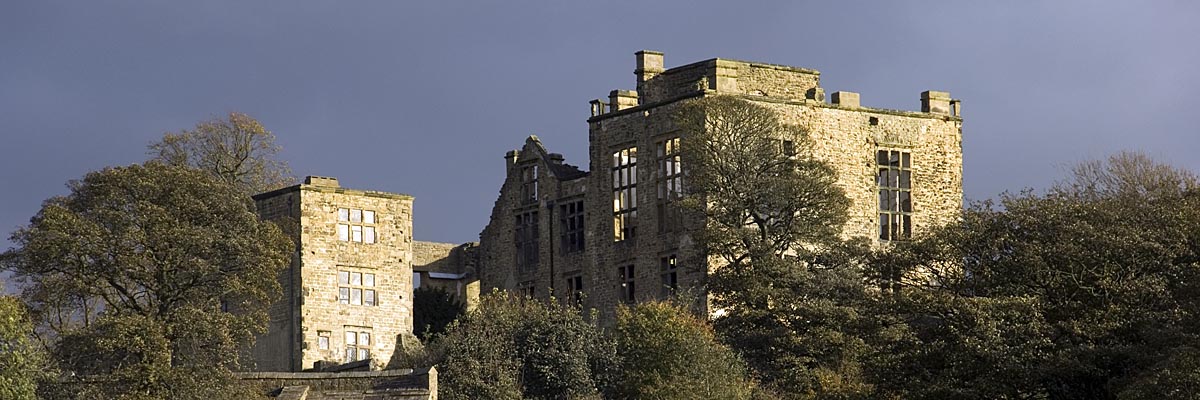History of Hardwick Old Hall
Hardwick Old Hall is one of the most innovative houses of the Tudor period. It was built between 1587 and 1596 by Bess of Hardwick, who was among the richest and best-connected women of the Elizabethan age. A radical modern mansion, it drew on the latest Italian innovations in house design. Although the Old Hall is now a magnificent shell, it remains a glittering reflection of Bess’s status and aspirations.

Bess of Hardwick
Bess of Hardwick is almost as famous for her four marriages as she is for her building activities. Born in 1527 into a minor gentry family, she was married at 15, but her young husband, Robert Barlow, died a year later.
In 1547 she met and married Sir William Cavendish, a 40-year-old widower and father of three. Together they bought the Derbyshire estate of Chatsworth, built a new house there, and made it their main country seat. After Sir William’s sudden death in 1557 she married her third husband, Sir William St Loe, one of Queen Elizabeth’s courtiers, and herself soon became an intimate friend of the queen.
When St Loe died suddenly in 1565 he left everything to Bess. After her next marriage, to George Talbot, 6th Earl of Shrewsbury – one of the richest men in the country – she arranged marriages between her son Henry and Grace Talbot, and her daughter Mary and Shrewsbury’s heir, Gilbert, intertwining the two families.
The Old and New Halls
After the violent collapse of her fourth marriage, Bess fled from Chatsworth in 1584 to her family estate at Hardwick.
As a countess, she needed something grander than her father’s medieval manor house there. In its place, she began to build Hardwick Old Hall in 1587. On the upper floors, the two wings contained state rooms for formal entertaining, lit by tall windows which command bold views across the open landscape. Each suite of state rooms had its own great chamber. Although the Old Hall is open to the elements, many of the original plaster overmantels are still in place.
In 1590, before the Old Hall was complete, Bess started to build another house immediately beside this it – the New Hall – this time using a professional architect, Robert Smythson. Contrary to what might be expected, the Old Hall was not abandoned in favour of the new one: instead, the two were intended to complement each other, like two wings of one building.
Later History
Bess died in 1608, leaving her son William Cavendish in charge of Hardwick. He was the founder of the Cavendish family, Dukes of Devonshire, who are still based at the Chatsworth estate that Bess and his father had bought.
The dukes eventually came to prefer Chatsworth over Hardwick, and partially dismantled the Old Hall in the 1750s, which gradually became ruinous. Its open interior was planted with specimen trees in 1793.
The Hardwick estate was eventually transferred to the National Trust in 1959, and the Ministry of Works took on the guardianship of the Old Hall, carrying out a major programme of stabilisation works. The smoke-blackened stonework was cleaned in the 1980s and in the 1990s the timber viewing platform was built in the Hill Great Chamber, making it possible to see the extraordinary plasterwork at close hand.
Find out more
-

Bess of Hardwick
One of the richest women of her time, Bess was a tireless and ambitious builder, whose houses symbolised her rise to wealth and power.
-

Download a plan of Hardwick Old Hall
Download this PDF plan to see how the buildings of the hall developed over time.
-

Buy the guidebook
This guidebook includes a family tree, plans, maps and a wealth of photographs of this magnificent and evocative house.
-

MORE HISTORIES
Delve into our history pages to discover more about our sites, how they have changed over time, and who made them what they are today.